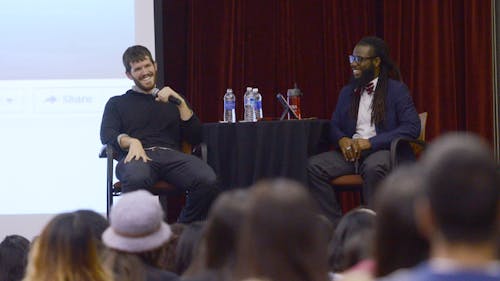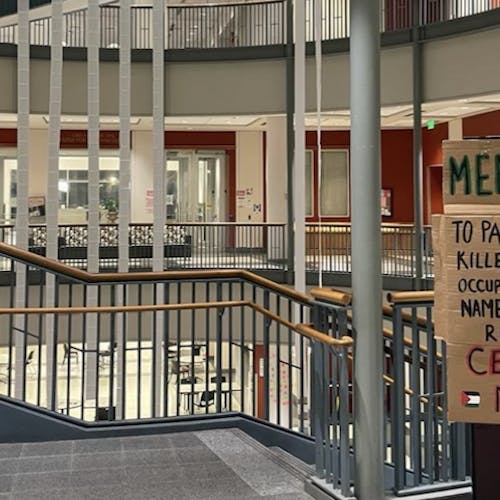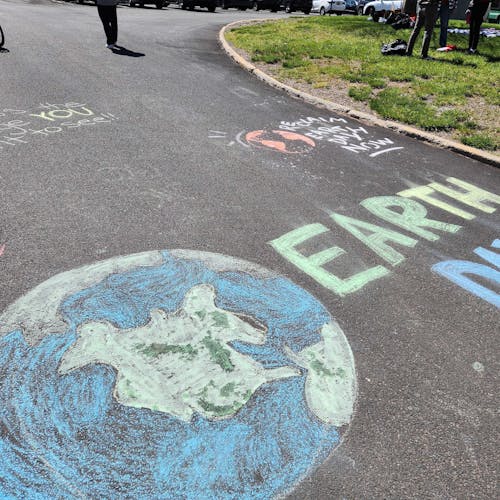Rutgers meets face behind Humans of New York

With nearly 5,000 pictures and three books, Humans of New York's Brandon Stanton has made a name for himself by sharing strangers' stories with the world over the last five years.
Stanton visited Rutgers last night at an event hosted by the Rutgers University Programming Association (RUPA) and the Department of Leadership and Experiential Learning, where a large number of attendees packed the two shows held at Trayes Hall in the Douglass Student Center.
Keywuan Caulk, assistant director of the Center for Social Justice Education and LGBT Communities, hosted the event and asked Stanton questions submitted by students.
After losing his “soul-sucking” finance job in Chicago five years ago, Stanton moved to New York with the goal of taking photos of 10,000 people.
Humans of New York originally began exclusively with photography, but as the project evolved, Stanton began incorporating quotes. Today, he takes a 45-minute interview and condenses the story into a few paragraphs.
The Humans of New York Facebook page has almost 16 million likes. Every story is unique, obtained by Stanton approaching strangers daily.
“You start talking with people and take an interest in their story that not many people have taken before,” Stanton said. “Sometimes I’m the only real conversation these people have had in a week or two.”
Allysa Kemraj, a School of Arts and Sciences sophomore, who sat in the front row to see Stanton in person, said she identifies with many of his stories.
“I found out about him a while ago because my cousin lives in Manhattan, and he showed it to me because I have an invisible disability,” Kemraj said. “He wanted me to feel better because there’s more than the eyes can see.”
Stanton’s posts uncover things about people that you would never be able to guess, she said.
“I’m excited to see that he’s a real person, and just the fact that someone else likes this,” Kemraj said. “The turnout shows that people care enough to understand what (other) people are going through.”
The most-shared post from Humans of New York on Facebook was of a Syrian refugee who lost her husband that risked his life for her own. To Stanton, another post is the most memorable.
“This one time, a man about my age, wearing a suit who looked very professional, told me he worked at JP Morgan,” he said. “He told me his dad had been a Navy SEAL in Iraq, and his mom recently died of cancer, so he was struggling with being an orphan.”
Shortly after posting the story, two people that were in the man’s fraternity contacted Humans of New York with information that both of the man’s parents are alive and that the man was a compulsive liar, he said.
“I took (the post) down,” Stanton said. “About a month and a half later, his sister emailed me and said, 'You took a really good picture of my brother. Can you send it to us? He killed himself.'”
Stanton said he respects the fact that many, in the audience and online, recognize not only how emotionally draining writing the Humans of New York stories can be, but also how important they are because these stories can help others.
The key to talking to people and helping them tell their stories is to be sincere and genuinely interested — that is is the magic of Humans of New York, he said.
“One of the needs of human beings is safety, and we get comfortable,” Caulk said. “I like to tell students there’s success in your failures. It really resonates with me when (Stanton) says not to fear the unknown.”
Stanton said success in failure is important, as he said he failed many times before achieving his present success.
“I’d thrown myself into the path of thousands of people,” he said. “You’ve got to get used to putting yourself out there and failing enough, and sometimes succeeding, so that you have a comfort in the unknown.”
Stanton recently traveled to other countries in order to expand his stories and to expose people from the West to cultures from other parts of the world that are often underrepresented, focusing greatly on the refugee crisis, he said.
“It became clear to me that after a certain point, I learned the magic and power of (the Humans of New York project) wasn’t New York City, but the interaction with the stranger,” he said.
Stanton's work with refugees is some of the best he has done because he introduced his largely Western audience to cultures and populations they might not have been exposed to before, he said.
Humans of New York has an extremely humanizing effect that allows people from the West to identify with those from other regions of the world, he said.
“A lot of time our society tells us how different we are from each other, but sometimes when we flip through (Stanton’s) stories we can resonate with what we see,” Caulk said. “The stories might be a reflection of our own stories.”
The more sobering stories stick to Stanton much longer than the lighthearted ones, and it is hard for him to walk away knowing that he cannot help everyone, he said. But he feels as though the process of telling stories is therapeutic in itself, both for himself and the storyteller.
“A lot of times we think the worst of people, but he’s willing to uncover so many things, and this shows how many people are willing to listen to him and his tips and advice,” Kemraj said. “It shows people aren’t as bad as we think they are.”



